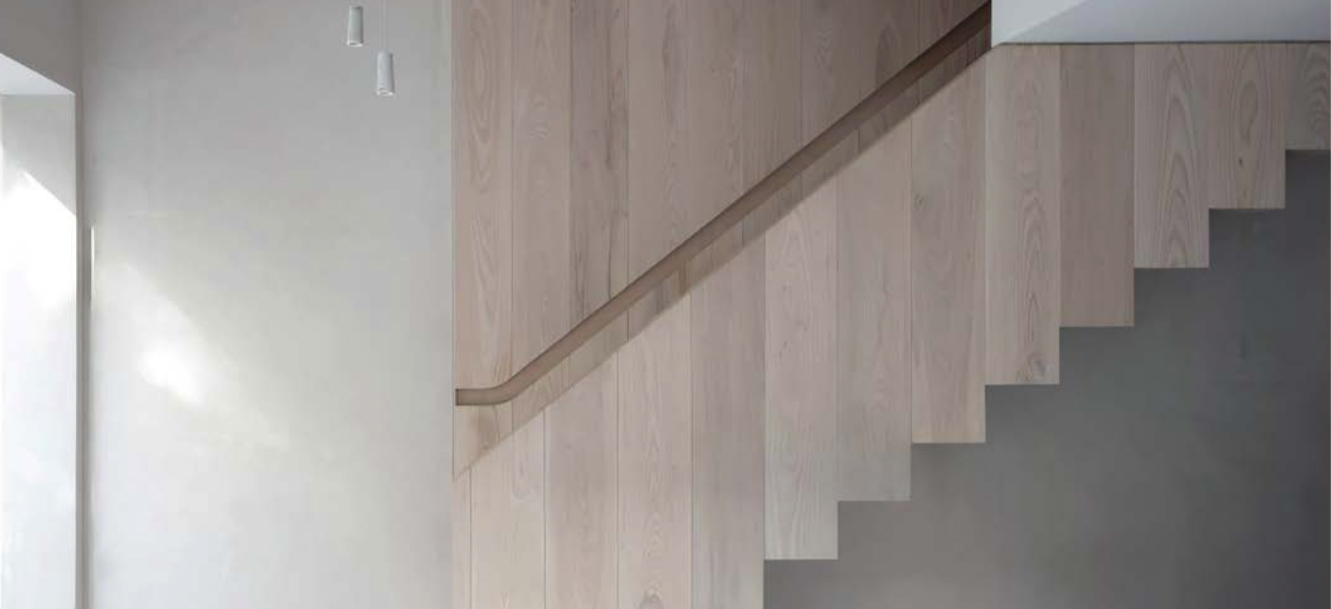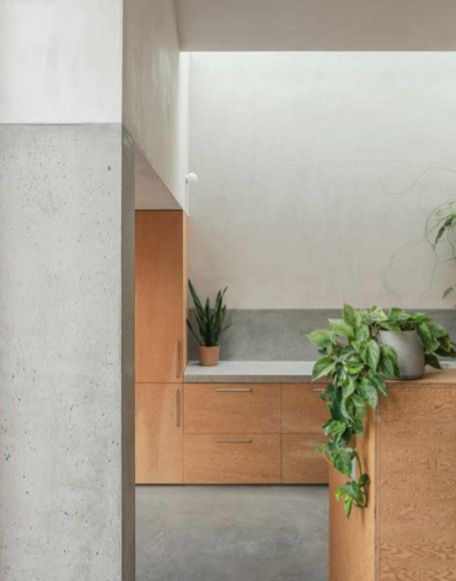Understanding the changing nature of insulation

|
| Article written by Simon Ayres, Managing Director, Lime Green Products Ltd for the AT Journal issue 141. |
Contents |
[edit] How are UK Government guidelines for insulation changing?
Building standards are and have changed, which is impacting insulation choice, shifting the way we think about insulation in different kinds of buildings and walls. This article discusses the new guidelines, what they mean for designers and explains the importance of design choice in avoiding common insulation pitfalls
[edit] Changing how we think about insulation
Insulation has a crucial role to play in ensuring a building and its occupants remain healthy. Although, often, properties are not built with this in mind, and as a result, many buildings with solid masonry walls in the UK don’t have effective insulation installed.
Until recently, it was thought that, for retrofit projects with solid masonry walls, impenetrable, vapour-tight barriers were the most suitable solution for controlling internal condensation.
However, recent research published by the Brick Development Association records that a large volume of the moisture present in solid masonry walls is caused by driving rain and leaks, which can lead to further problems for the building. It also found that when moisture builds up in this way, in warmer weather, it is likely to be driven inwards against the impenetrable, vapour-tight barriers. Over time, this can cause the moisture to accumulate in the building, with no means of escape, leading to eventual rot in lintels and joist ends.
Recognising the risk of this insulation solution, British Standards BS 5250:2021 for the management of moisture in buildings now prohibits the use of dew point calculations for solid-walled properties. Instead, it advocates for breathable insulation on both sides of the wall, ensuring any moisture has a means of escape once the wall dries out.
[edit] Presence of moisture
The recent changes to building standards promotes an alternative perspective on moisture and insulation in solid-walled properties.
Previously, moisture was often thought of as something that needs to be eliminated from a building in its design phase. However, in reality, moisture will always be present. That is why BS 5250:2021 now suggests it should be seen as an interactive matter, and focus should instead be placed on moisture management, ensuring any moisture present has a way to escape through the building’s fibres.
[edit] Moving beyond U-values
When insulating a building, it is important to think beyond the U-values of individual materials in isolation.
Although considering heat transfer is important in reducing overall heat loss, the lowest U-value alone will not necessarily equal optimal thermal performance in reality. Instead, it is important to think about how the insulation materials will work together as a whole system.
[edit] Installing insulation
When selecting the most suitable methods and materials for retrofitting internal insulation to solid masonry walls, there are four main steps to consider: assess, design, install and maintain.
[edit] 1. Assess
When installing insulation as part of a retrofit project, regardless of size, it is first important to understand the building itself. Think about the amount of energy the building is losing through its walls, floors and ceilings, for example, and consider how much insulation can help you to save.
Ultimately, your insulation will change the physics of your solid wall, and there is no one-size-fits-all answer about the ‘correct’ way to do this. Your decision should be informed by a number of different factors, such as:
[edit] Wall type and build-up
- What materials is your wall made from?
- Is it a solid wall or cavity wall?
- How thick is it?
- What condition is the wall in?
[edit] Mortar type
- Is the wall’s mortar lime or cement-based?
- This will affect how the wall absorbs and deals with moisture.
[edit] Existing internal lining
- Is there any existing internal lining?
- If there is, is it plasterboard, lime, gypsum or something else?
- This is important as you need to ensure your insulation can bond successfully to the existing wall. In some cases, you may need to remove internal lining before installing internal insulation.
[edit] Existing internal finish
- Is the wall finished with paint, wallpaper or another material?
- You will need to remove wallpaper or impermeable paint before installing insulation to retain breathability and ensure the insulation performs effectively.
[edit] Existing external finish
- Is your external finish cement render, lime render or paint finished?
- Understanding how moisture can escape from the wall externally is key to ensure it does not become saturated following periods of heavy rainfall.
[edit] External condition
- Consider the overall condition of your building – for example, is there any maintenance needed?
- Look at any water pipework, window frames, wall penetrations and ground conditions, for example.
[edit] Internal condition
- Are there any damp patches, mould or stains that could indicate internal condensation?
[edit] 2. Design
Once you understand the building in more detail, you can start to think about the most suitable materials for your insulation.
It is important to keep three things in mind when designing your insulation solution:
- Thermal performance
- Potential risks
- Spatial impact.
It is also important to minimise thermal bridging to reduce risk of mould growth, as well as considering insulation for joists and floors, as well as walls, to minimise risk of condensation.
[edit] 3. Install
How you install your internal wall insulation will vary depending on the materials you are using. However, generally, when installing insulation it is essential to fit it without gaps or cavities, as these can encourage cold air travel and the growth of damp or mould.
It is also important to consider the different properties of different insulation products. For example, some materials, such as lime, have high-alkaline properties, making them antibacterial, which reduces the risk of damp in the wall.
[edit] 4. Maintain
When you take the time to assess, design and install insulation based on the needs of your individual building, there is often very little maintenance required on an ongoing basis.
When your insulation does not match your wall, it can result in serious maintenance issues further down the line, with BS 5250:2021 noting how non-breathable insulation can cause extreme issues in solid-walled properties, such as rot.
For more information, or to understand the most suitable insulation solution for your retrofit project, explore Lime Green’s insulation guides.
This article originally appeared in the AT Journal issue 141 entitled "How are UK Government guidelines for insulation changing?"
--CIAT
[edit] Related articles on Designing Buildings
- Aerogel insulation for buildings.
- Cavity wall insulation.
- External wall insulation.
- Floor insulation.
- Insulation for ground floors.
- Reducing thermal bridging at junctions when designing and installing solid wall insulation FB 61.
- Roof insulation.
- Solid wall insulation.
- Thermal insulation for buildings.
- Types of insulation.
- Wall insulation and moisture risk.
- Wood and insulation.
Featured articles and news
Key points for construction at a glance with industry reactions.
Functionality, visibility and sustainability
The simpler approach to specification.
Architects, architecture, buildings, and inspiration in film
The close ties between makers and the movies, with our long list of suggested viewing.
SELECT three-point plan for action issued to MSPs
Call for Scottish regulation, green skills and recognition of electrotechnical industry as part of a manifesto for Scottish Parliamentary elections.
UCEM becomes the University of the Built Environment
Major milestone in its 106-year history, follows recent merger with London School of Architecture (LSE).
Professional practical experience for Architects in training
The long process to transform the nature of education and professional practical experience in the Architecture profession following recent reports.
A people-first approach to retrofit
Moving away from the destructive paradigm of fabric-first.
International Electrician Day, 10 June 2025
Celebrating the role of electrical engineers from André-Marie Amperè, today and for the future.
New guide for clients launched at Houses of Parliament
'There has never been a more important time for clients to step up and ...ask the right questions'
The impact of recycled slate tiles
Innovation across the decades.
EPC changes for existing buildings
Changes and their context as the new RdSAP methodology comes into use from 15 June.
Skills England publishes Sector skills needs assessments
Priority areas relating to the built environment highlighted and described in brief.
BSRIA HVAC Market Watch - May 2025 Edition
Heat Pump Market Outlook: Policy, Performance & Refrigerant Trends for 2025–2028.
Committing to EDI in construction with CIOB
Built Environment professional bodies deepen commitment to EDI with two new signatories: CIAT and CICES.
Government Grenfell progress report at a glance
Line by line recomendation overview, with links to more details.
An engaging and lively review of his professional life.
Sustainable heating for listed buildings
A problem that needs to be approached intelligently.
50th Golden anniversary ECA Edmundson apprentice award
Deadline for entries has been extended to Friday 27 June, so don't miss out!
CIAT at the London Festival of Architecture
Designing for Everyone: Breaking Barriers in Inclusive Architecture.
Mixed reactions to apprenticeship and skills reform 2025
A 'welcome shift' for some and a 'backwards step' for others.




























